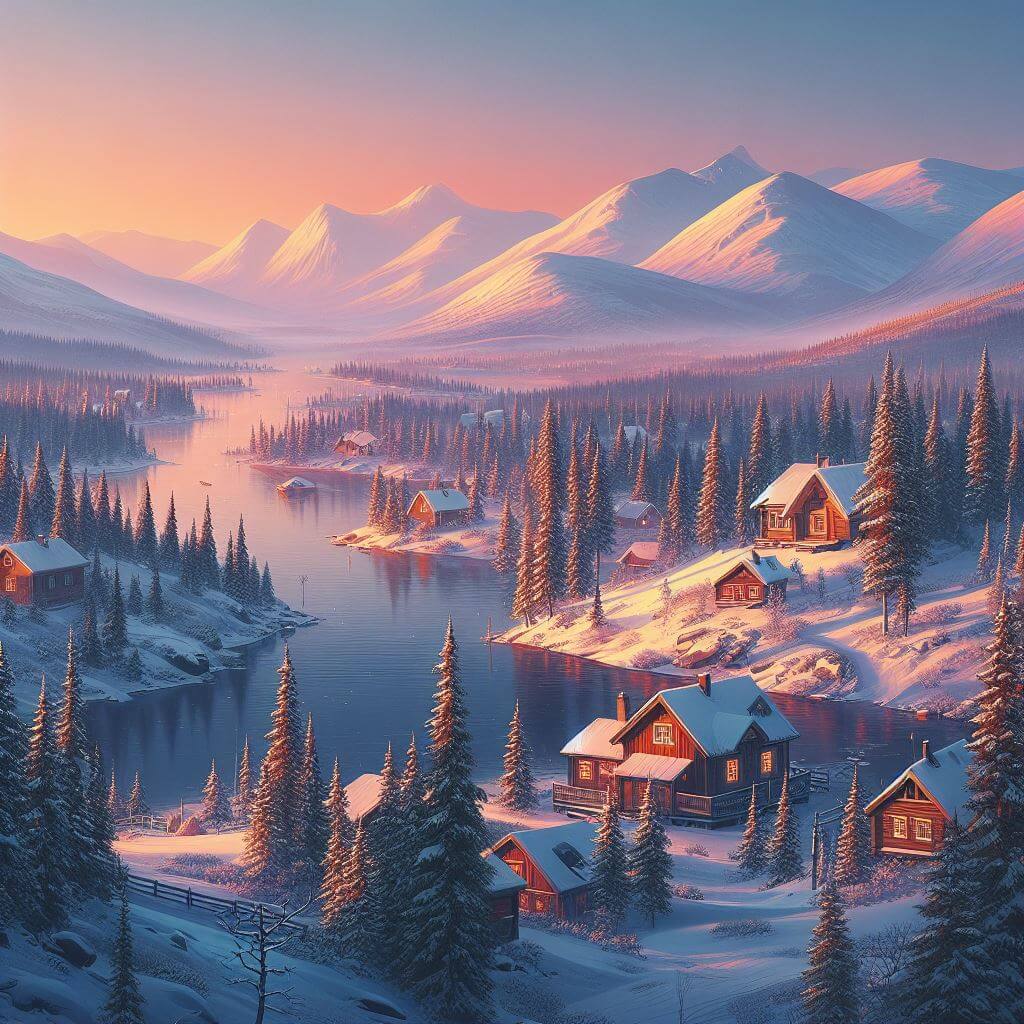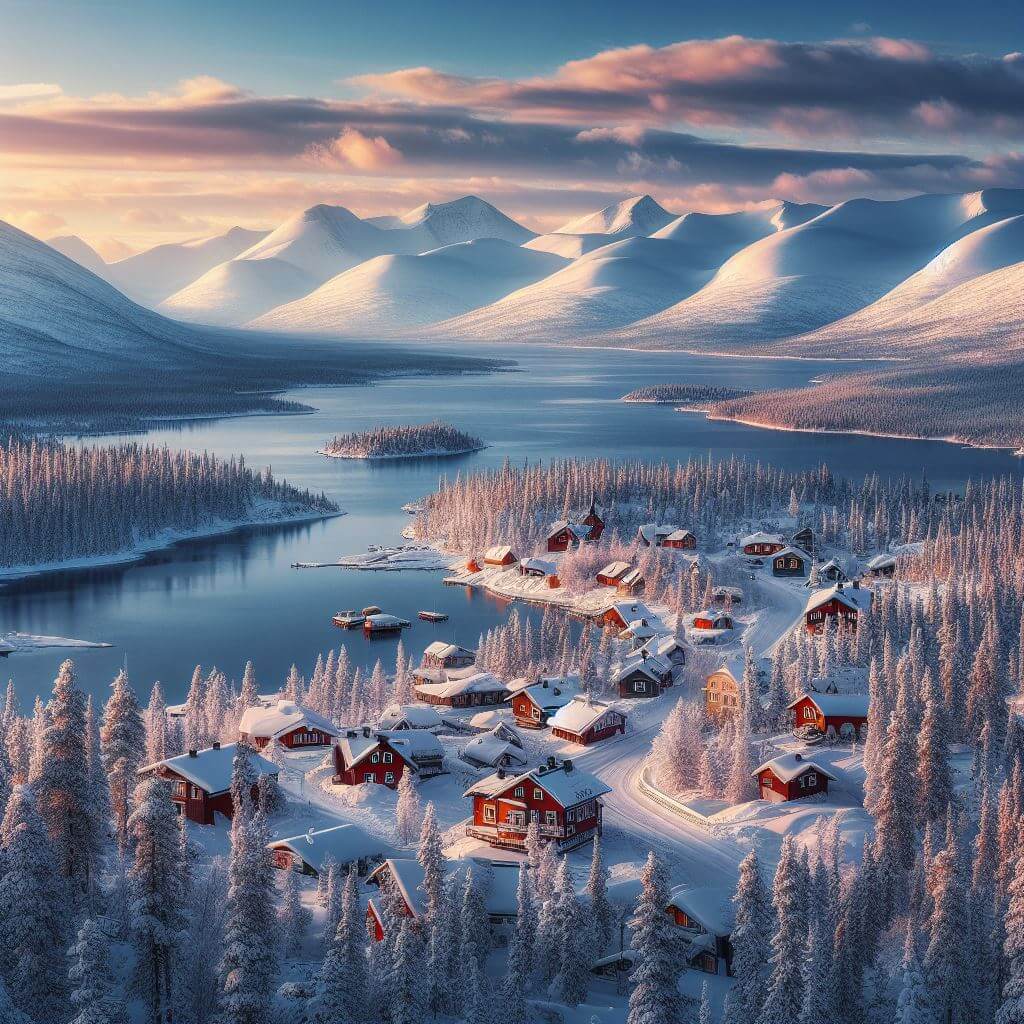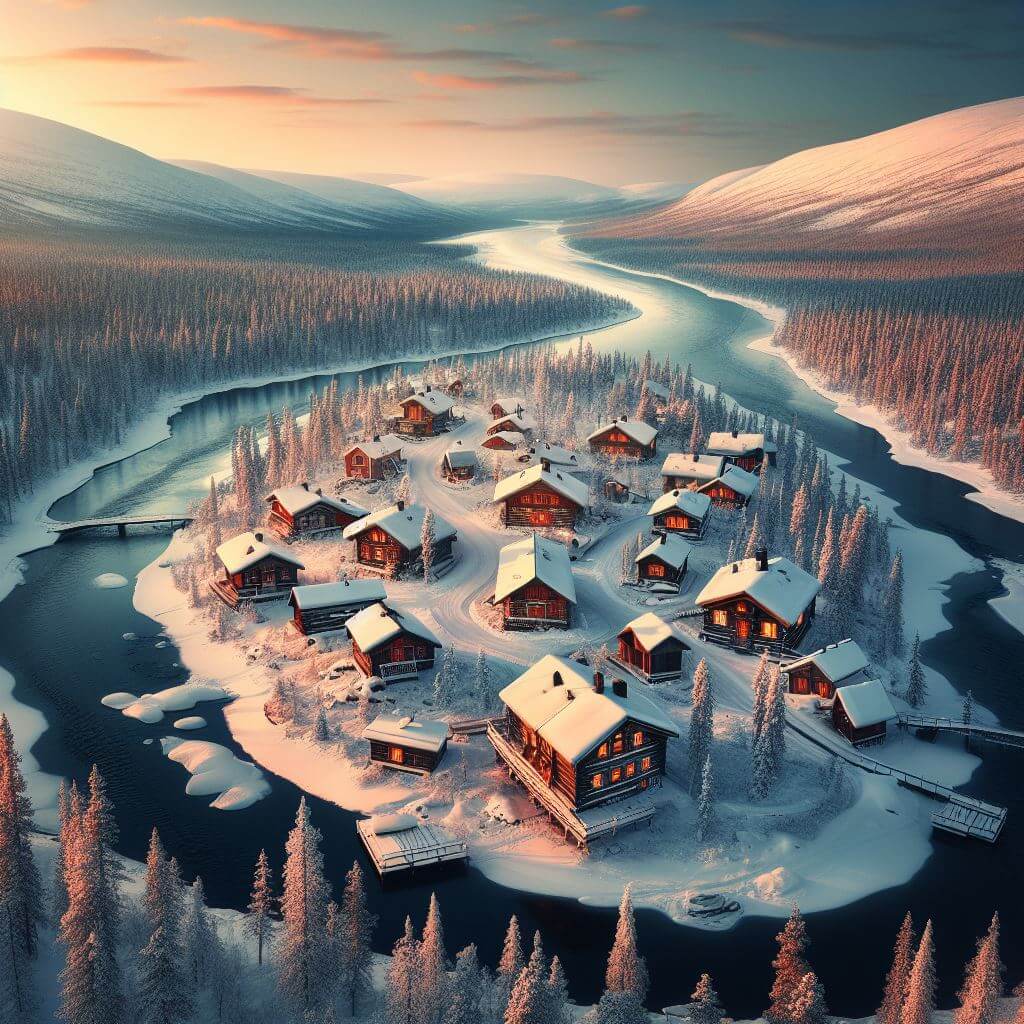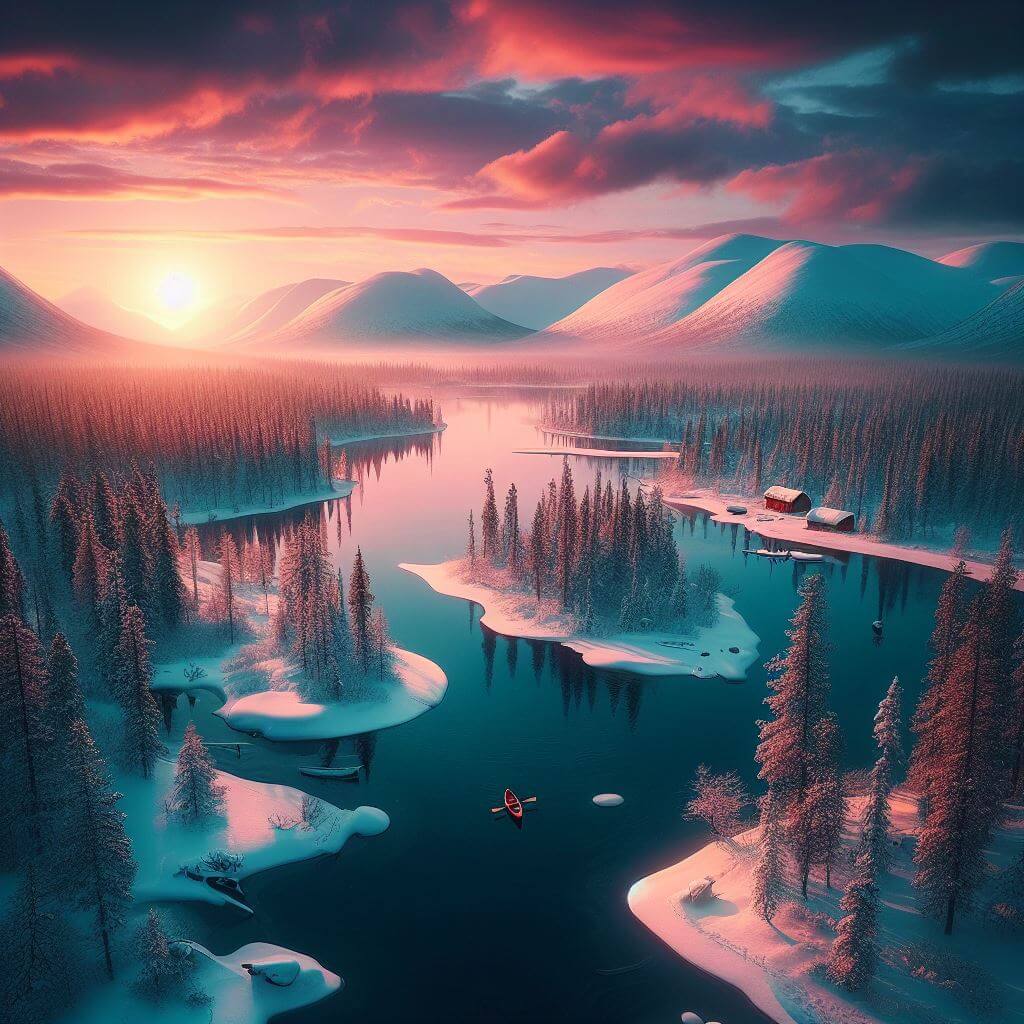Explore the vast and rugged territory of Lapland, spanning four countries – Norway, Sweden, Finland, and Russia. Learn about Lapland’s diverse geography, rich resources, and the cultural blend of the Lappish people. Dive into the history of the region, from its ancient roots as a hunting ground to the modern-day challenges and achievements of the Lapp population.

LAPLAND the region in northern Europe inhabited by the Lapps. It is a huge territory, some 150,000 square miles in area, larger in size than New Mexico, or Denmark and Norway combined. It is not a part of one country, but of four. In Lapland is included the northern and the northeastern part of Norway (Troms, Finnmark, and part of Nordland counties) ; the extreme north of Sweden and Finland ; and the Kola Peninsula ( Murmansk Oblast) in Russia. The Lappish heartland is in Sweden, where there is a large Lappish population in the counties of Norrbotten and Vasterbot-ten, which include the former province of Lap-pland. There are also scattered Lappish communities in the provinces of Vasternorrland and Jamtland. In Finland the most northerly province is called Lappi (Lapland), of which Rovaniemi is the capital. Less is known about the Lappish population on the Kola Peninsula.

Geography and Resources
Lapland is a wild and rugged country. In the central part are the tall mountains of the North Scandinavian mountain region, with many high plateaus between the peaks. There are lakes, huge swamps, and large evergreen forests with spruce and Scottish fir, dwarf or Lapp-birch, and here and there a few rowan trees. The winter fodder for the reindeers, the lichen commonly called reindeer moss (Cladonia rangiferina), grows all over the region.
The temperature varies greatly. In certain localities the winters are extremely cold, while on the western fringes the harbors in Norway are free of ice through the entire year. The midnight sun makes for very rapid growth in the short summer.
Along the Norwegian coast there are good hunting and rich fishing grounds. What the Norwegians call fugelberg (bird mountains) are mountain cliffs rising perpendicularly out of the sea, where seabirds are found by the thousands. Birds are snared and hunted, eider down is gathered, guano is collected. There are also tremendous sources of mineral wealth in Lapland, its mines containing some of the highest-grade ore in the world. Petsamo, the aluminum mine now in the hands of the Russians, is located in the Finnish part of Lapland.

The People
Lapland is not truly Lappish any more, since there has been a great influx of other peoples. In the Norwegian section many Finns and Norwegians have settled; intermarriage is common, and a constant merger of races is taking place. The same is true of Swedish Lapland. Steps have been taken to safeguard the interests of the new settlers, and often the Lapps have had to pay heavy indemnities for the damage done by reindeer to the settlers’ lands and crops. This caused much hard feeling in the past, but more recently the Swedish government has shown a greater concern for the future of the nomadic Lapps.
The people who gave their name to Lapland came into their present habitat before the birth of Christ. Later (after 100 a.d._) the Finns arrived, and the Lapps adopted their language. In fact, the name Lapp comes from a Finnish word lapaan, meaning “nomad.” The Lapps call themselves Same (pi. Sameh) or Same-lots. Because of the close similarity of the languages it was considered for a long time that Finns and Lapps were closely related. Lately it has been claimed that the Lapps are related to the Samoyeds, and the latter are referred to as “lapponoid.”
The Lapps came into their present location as hunters. Gradually they managed to domesticate the reindeer and became herders. In the present period their culture is in transition. In place of the nomadic life, they have chosen occupations which make it possible for them to take up permanent domiciles.
The Lapp population is approximately 33,000. Some 21,000 live in Norway, 8,000 in Sweden, and 2,000 each in Finland and the Kola Peninsula. Their homeland for the most part is north of the Arctic Circle, but in Norway and Sweden they range several degrees farther south.
Physically, the Lapps differ greatly from the surrounding peoples. They seldom grow over 5 feet; their hair is black and hardly ever turns gray; their faces have the Mongolian cast. Their torsos seem oversized because the legs are short and seem even shorter because of the common bowlegs. There was a time when it was considered that the Lapps did not have sufficient strength to carry heavy burdens, but travelers have been amazed at their brawn and endurance. The life of a herder demands a strong physique. Mentally the Lapps are very alert, but neuroses are common as a result of their being confined to cramped quarters during severe weather. These neurotic spells are referred to as Lapp Panic.

Even though Christianity was accepted early by the Lapps, many pagan practices continued. Thomas von Westen (1682-1727), a Norwegian clergyman and missionary, did much to combat superstition, and so did the brothers Lars Levi Laestadius (1800-1861) and Petrus Laestadius (1802-1841), who made a tremendous religious impact on these people of the north. The Lapps are a literate people; the first school, Den Skyt-teanska Lapp Skolan in Lycksele, was founded in the year 1631.
The modern Lapps are only a fragment of a once numerous and powerful people. Among their achievements are the domestication of the reindeer, now a worldwide business, and the invention of skis. Their artistic tradition is particularly impressive; through the years, Lappish designs have considerably influenced the work of Swedish artists. In the field of music their contribution has yet to be properly evaluated, but their skill and refinement astonish the collector.